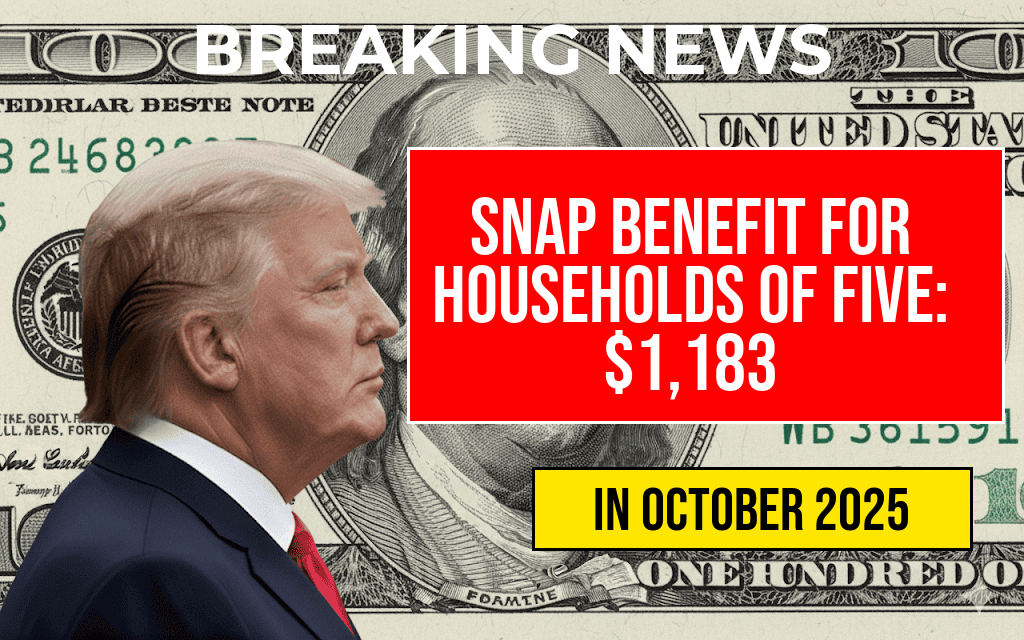Understanding the Supplemental Nutrition Assistance Program (SNAP) benefits is crucial for millions of American families struggling to put food on the table. The monthly assistance varies significantly, with benefits ranging from $298 to $1,571 depending on the household size and composition. As of 2023, the U.S. Department of Agriculture (USDA) has adjusted these benefits to reflect changes in cost of living and food prices, ensuring that families receive adequate support. This article explores how SNAP benefits are calculated, the factors influencing the amount provided, and the importance of the program in promoting food security across the nation.
How SNAP Benefits Are Calculated
SNAP benefits are determined through a formula that considers several key factors, including household size, income, and expenses. The amount a household receives is primarily based on the Thrifty Food Plan, which estimates the cost of a nutritious diet. Here’s a breakdown of how benefits are determined:
- Household Size: The number of individuals living together and sharing food resources plays a crucial role in benefit calculations. Larger households typically receive higher benefits.
- Income: Households must meet certain income thresholds to qualify for SNAP. The USDA sets these thresholds based on federal poverty guidelines.
- Deductible Expenses: Necessary expenses such as housing, child care, and medical costs can be deducted from a household’s gross income, which may increase the benefit amount.
Benefit Ranges by Household Size
The following table illustrates the average monthly SNAP benefits for different household sizes, highlighting how the amount varies significantly:
| Household Size | Monthly Benefit ($) |
|---|---|
| 1 Person | 298 |
| 2 Persons | 535 |
| 3 Persons | 794 |
| 4 Persons | 1,063 |
| 5 Persons | 1,271 |
| 6 Persons | 1,480 |
| 7 Persons | 1,571 |
Why SNAP Matters
SNAP plays a critical role in reducing food insecurity across the United States. According to the USDA, approximately 42 million individuals rely on the program, which is particularly vital during economic downturns or personal financial crises. This assistance not only helps families afford food but also stimulates local economies, as benefits are typically spent quickly on groceries.
Challenges and Criticisms
Despite its benefits, SNAP faces challenges and criticisms. Some argue that the benefits provided may not be sufficient to cover the rising costs of groceries. Recent studies have indicated that many participants still experience food insecurity, even with SNAP assistance. Others criticize the program for its eligibility requirements, suggesting that they may exclude vulnerable populations who need help.
Recent Reforms and Future Outlook
In response to ongoing challenges, policymakers are exploring reforms to enhance the effectiveness of SNAP. Potential changes may include increasing benefit amounts, simplifying the application process, and expanding eligibility criteria to include more low-income families. As discussions continue, stakeholders emphasize the need for a sustainable approach to food assistance that reflects current economic realities.
For more detailed information about SNAP benefits, eligibility, and application procedures, visit the USDA SNAP Eligibility page and the Forbes guide on SNAP benefits.
Frequently Asked Questions
What are SNAP benefits and who qualifies for them?
SNAP benefits, or the Supplemental Nutrition Assistance Program, provide financial assistance to low-income individuals and families to help them purchase food. To qualify, applicants must meet certain income and asset criteria, which vary by household size and state.
How is the amount of SNAP benefits determined for a family?
The amount of SNAP benefits a family receives is based on various factors, including family size, income, and allowable deductions. Benefits typically range from $298 to $1,571 per month, depending on these criteria.
What factors can affect the SNAP benefit amount?
Several factors can impact the total SNAP benefit amount, including the number of people in the household, monthly income, and specific expenses such as housing costs and child care. These elements help determine eligibility and benefit levels.
Can SNAP benefits be used to purchase non-food items?
No, SNAP benefits are designated for purchasing food items only. However, there are some exceptions, such as seeds and plants that produce food for the household. Non-food items like toiletries and household supplies cannot be bought with SNAP.
How often are SNAP benefits reevaluated?
SNAP benefits are typically reevaluated every 6 to 12 months, depending on the state’s regulations and the household’s circumstances. Recipients must report any changes in income or household composition that could affect their eligibility and benefit amount.






